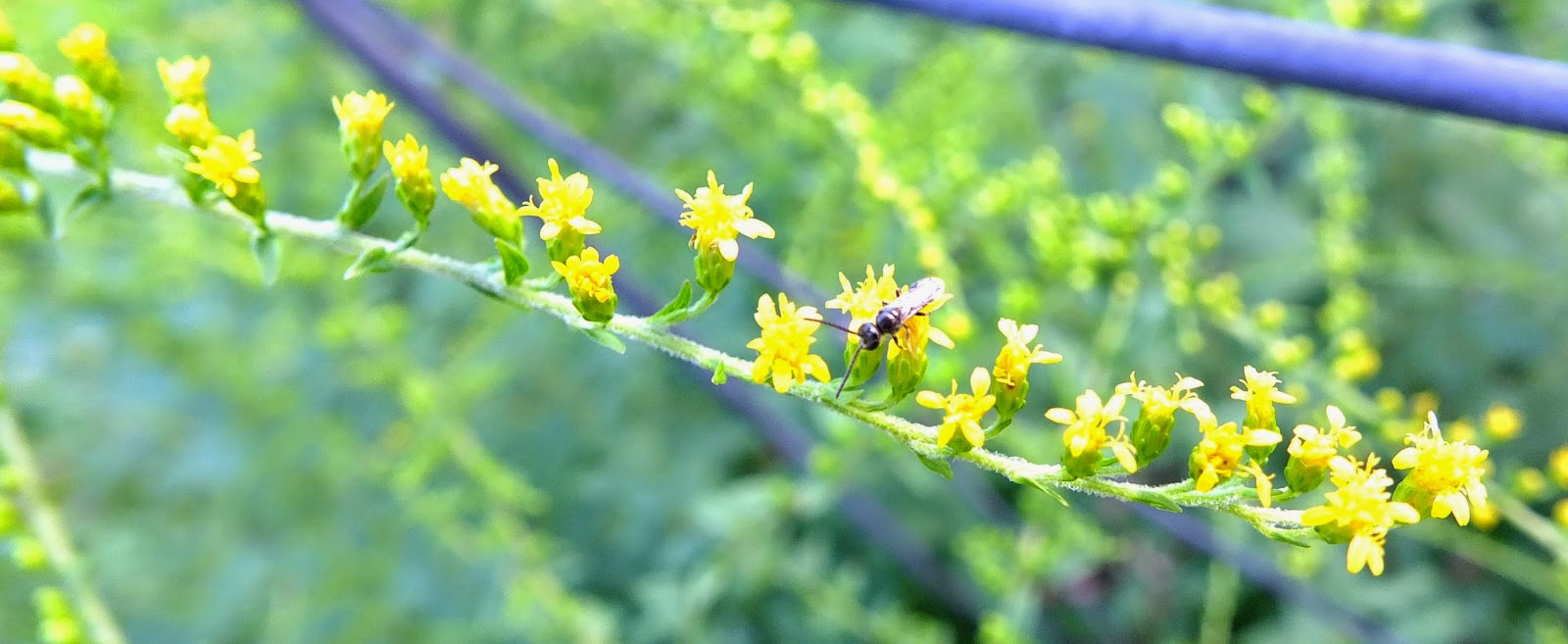For Gail's Wildflower Wednesday I took some photos of the area where the tree used to be, and included photos of fading foliage and seedheads as well as a few blooms.
I deadheaded the Gray-head coneflowers, and some of the clumps are reblooming.
Wild senna:
Little bluestem and Amsonia illustris:
Wild quinine:
Riddell's goldenrod:
Ironweed:
Golden alexanders:
Illinois bundleflower:
Liatris of some kind:
Meadow rue and cup plant:
Monarda fistulosa:
Narrow-leaf mountain mint and false baptisia:
New England aster, foliage of swamp milkweed, and maybe ironweed seeds in the background on the right.
Here are a couple views from the porch:
Our fall weather has been quite pleasant, and we are still getting some rain. The birds have been eating some of the seeds, but it looks like they will have some for awhile yet. I am watching our now 4 month old granddaughter 4 days a week. I harvested some of the seeds while holding her over a couple days, and we found places to place some on the ground, and I walked around, trying to put a little dirt over them. Maybe I will get some seedlings to share with others in the spring. I hope your fall is going well!
I deadheaded the Gray-head coneflowers, and some of the clumps are reblooming.
Wild senna:
Little bluestem and Amsonia illustris:
Wild quinine:
Riddell's goldenrod:
Ironweed:
Golden alexanders:
Illinois bundleflower:
Liatris of some kind:
Meadow rue and cup plant:
Monarda fistulosa:
Narrow-leaf mountain mint and false baptisia:
New England aster, foliage of swamp milkweed, and maybe ironweed seeds in the background on the right.
Here are a couple views from the porch:
Our fall weather has been quite pleasant, and we are still getting some rain. The birds have been eating some of the seeds, but it looks like they will have some for awhile yet. I am watching our now 4 month old granddaughter 4 days a week. I harvested some of the seeds while holding her over a couple days, and we found places to place some on the ground, and I walked around, trying to put a little dirt over them. Maybe I will get some seedlings to share with others in the spring. I hope your fall is going well!
































































